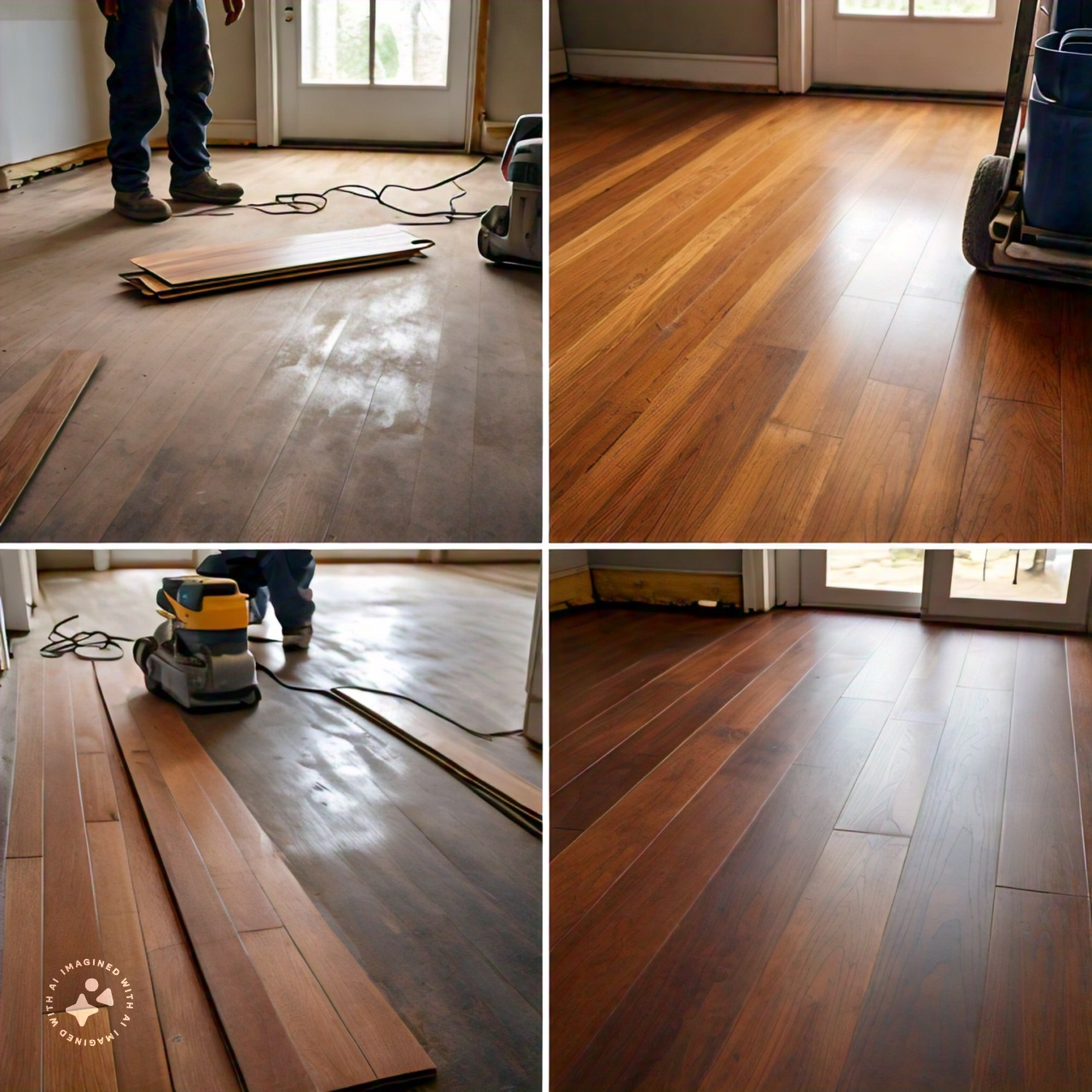When it comes to sprucing up your hardwood floors, the big question often boils down to whether it’s cheaper to refinish the wood you already have or just throw in the towel and go for a total replacement. Spoiler alert: more often than not, it’s more cost-effective to refinish hardwood floors rather than replace them. But hey, let’s break it down and see why that’s the case.
The Cost Comparison
Refinishing Hardwood Floors:
Refinishing your existing hardwood floors generally costs significantly less than replacing them. The cost can vary based on factors like the size of the floor, the type of wood, and your location, but on average, you’re looking at about $3 to $8 per square foot. This process involves sanding down the floors to remove the old finish and any surface damage, then applying a new stain and topcoat to protect and beautify the wood.
Replacing Hardwood Floors:
On the flip side, replacing hardwood floors can be a wallet-drainer. The costs include the price of the new wood, labor for removing the old floors, installation of the new ones, and sometimes additional subfloor preparation. You’re likely to spend anywhere from $8 to $15 per square foot, which can add up pretty fast if you have a lot of ground to cover.
Why Refinish Instead of Replace?
1. Cost-Effective:
As we just crunched the numbers, refinishing is generally less expensive than a full replacement. It allows you to extend the life of your existing floors without the higher cost of new materials and extensive labor.
2. Less Mess and Hassle:
Replacing floors is a big job. It involves ripping out the old floors, which can be messy and disruptive, especially if you’re living in the space while the work is being done. Refinishing, while still a bit messy (think sawdust everywhere), is usually quicker and less invasive.
3. Environmental Impact:
If you’re eco-conscious, refinishing is definitely the way to go. It reduces waste by keeping your old flooring out of a landfill. Plus, it requires fewer resources than manufacturing, transporting, and installing new materials.
4. Maintains Character:
Older hardwood floors have a character that often can’t be matched by newer materials. Refinishing lets you keep that authentic, lived-in charm that’s especially prized in older homes.
5. Increases Home Value:
Both refinishing and replacing hardwood floors can increase your home’s value. However, since refinishing is less costly, the return on investment tends to be higher. Homebuyers love seeing “hardwood floors” in a listing, and freshly refinished floors can be just as appealing as brand new ones.
When Should You Consider Replacing?
Now, it’s not all black and white. There are times when replacing hardwood floors might be the better choice:
1. Extensive Damage:
If your floors are severely damaged—think deep gouges, large cracks, or widespread rot—refinishing might not be enough to salvage them.
2. Multiple Refinishing:
Hardwood floors can only be refinished so many times before they become too thin. If your floors have been refinished multiple times already, it might be time for a new installation.
3. You Want a Completely New Look:
If you’re after a completely different style or a type of wood that’s drastically different in color or grain, replacing will be your go-to option.
Tips for Refinishing Hardwood Floors
If you decide to refinish, here are a few tips to ensure it goes smoothly:
- Choose the Right Finish: There are various types of finishes available, from polyurethane to oil-based. Each has its pros and cons, so consider what’s best for your lifestyle and the amount of traffic your floors get.
- Hire Professionals: Professional floor refinishers know how to get the job done right and can often complete the work more quickly and with less mess than DIY attempts.
- Prepare for Some Disruption: While refinishing isn’t as disruptive as replacing, it will still involve some noise and dust. Plan accordingly, especially if you have allergies or pets.
Conclusion
Refinishing hardwood floors is generally the more cost-effective, less wasteful, and equally aesthetically pleasing option compared to replacing them. It allows you to keep the character of your home intact while still refreshing your space. So before you rip up those boards, consider giving them a little TLC with a new finish—you might be surprised by how transformative this option can be!





